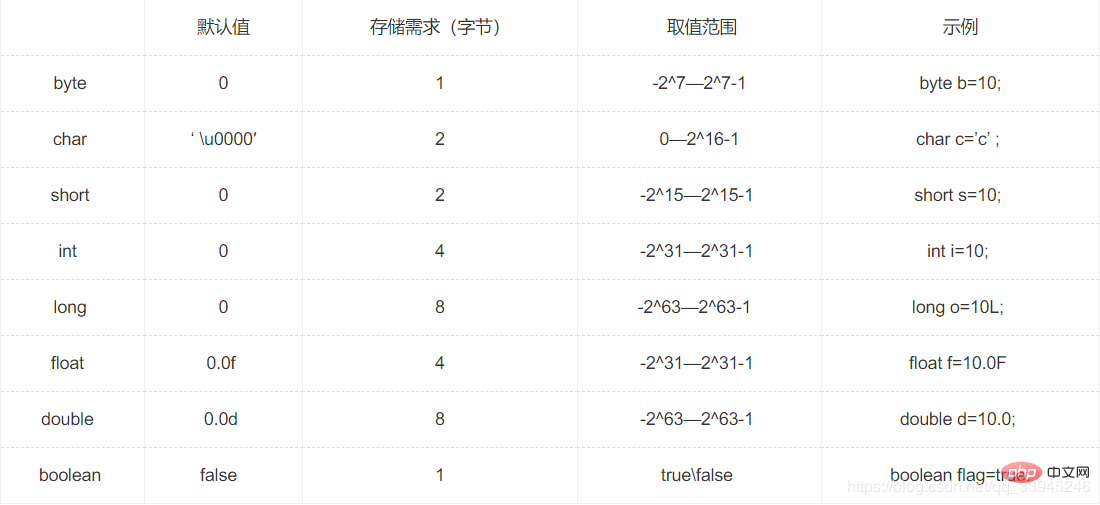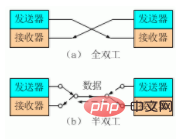Java interview knowledge points

1. Java files are compiled into bytecode files by JVM, that is, .class files. When the bytecode files are run in different operating systems, the operating system then converts the bytecode files into bytecode files. Code files are compiled into machine code files. This is Java cross-platform
2. First of all, let’s make it clear that java’s GC recycling is completely automatic. There is no relevant API for manual recycling. All memory allocation and recycling permissions are in the jvm and in the developer’s hands. There is no absolute way to force garbage collection, but you can do it like this:
1) For objects that are no longer referenced, assign their references to null in a timely manner. obj = null;
2) If the memory is really tight, call the System.gc () method to suggest the garbage collector to start collecting garbage and notify the GC to run. However, the Java language specification does not guarantee that the GC will be executed.
3. Default value and value range of java basic types
Integer type byte (1 byte) short (2 bytes) int (4 bytes) long (8 bytes)
Character type char (2 bytes)
Floating point type float (4 bytes) double (8 bytes)

4. The ASCII code values of common characters are as follows: the ASCII code value of a space is 32; the ASCII code values of numbers 0 to 9 are 48 to 57 respectively; the capital letter "A" The ASCII code values of "Z" are 65 to 90 respectively; the ASCII code values of lowercase letters "a" to "z" are 97 to 122 respectively.
5. Java identifiers have the following naming rules:
1) Composed of 26 English letters in upper and lower case, numbers: 0-9, symbols: _ $ ¥
2) The identifier should start with letters, _, $.
3) The identifier cannot be a keyword.
6、Abstract classes and interfaces
1) About abstract classes
Before JDK 1.8, the default access permission of abstract class methods was protected
When JDK 1.8, the default access permission of abstract class methods becomes default
2) About the interface
Before JDK 1.8, the methods in the interface must be public
JDK In JDK 1.8, the methods in the interface can be public or default. When JDK 1.9, the methods in the interface can be private.
7. Boxing and unpacking BoxThe basic data type is converted into a packaging class by boxing (such as: int --> Integer).
Converting a wrapper class into a basic data type is unboxing (such as: Integer --> int).
The wrapper class is the reference type, and the basic data type is the value type.
Through boxing and unboxing operations, a bridge can be built between value types and reference types. In other words, value types and reference types can be easily converted to each other, boxing and unboxing can uniformly examine the system, and any type of value can ultimately be processed as an object.
8. Serialization and deserializationJava will not instantiate static variables and transient-modified variables during serialization, because static represents members of the class and transient represents objects. Temporary data, it is declared that these two types of data members cannot be serialized
9. Java has two transfer methods, value transfer and reference transfer. Basic types and those created in this way with string str = "aaa"; are all passed by value. Object creation and arrays are all passed by reference, so special attention needs to be paid when judging the formal parameters of the function.10. Java garbage collection mechanism
Garbage collection is mainly aimed at recycling the heap area, because the memory in the stack area is released along with the thread. The heap is divided into three areas: Young Generation, Old Generation, and Permanent Generation (Method Area).
1) Young generation: When an object is created (new), the object is usually placed in Young (except for some objects that occupy relatively large memory). After a certain Minor GC (memory recycling for the young generation), it is still Live objects will be moved to the old generation (some specific movement details are omitted).
2) Old generation: It is the above-mentioned young generation moved over and some larger objects. Major GC (FullGC) is for the collection of the old generation.
3) Permanent generation: stores final constants, static variables, and constant pools.
11. Package referenceImport java.util.* ;
Can access all classes in the java/util directory, but cannot access the java/util subdirectory All classes under
12. The constructor cannot be inherited, and the constructor can only be called explicitly or implicitly. (This is true both with and without ginseng)13. Files are divided into text files and binary files. Computers only understand binary, so they are actually different ways of interpreting binary. Text files are characters displayed in different encoding formats, such as Ascii, Unicode, etc. The suffix names of text files in window include ".txt", ".log", source code files of various programming languages, etc. Binary files are text documents. You can't read garbled characters when you open them. As long as the file can be opened with text, it can be regarded as a text file, but the displayed result is not what you want. Binary files can only be read with special applications, such as ".png"," .bmp", etc., most of the files in the computer are still binary files
14. try is only suitable for handling runtime exceptions, while try catch is suitable for handling ordinary runtime exceptions. In other words, if you only use try to handle ordinary exceptions without using catch, the compilation will not pass, because the compiler rigidly stipulates that if ordinary exceptions are caught, they must be explicitly declared with catch for further processing. There is no such provision for runtime exceptions at compile time, so catch can be omitted. It is understandable for the compiler to add catch.
15. Pipeline
For pipelines, there are the following types:
① Ordinary pipeline (PIPE): There are usually two restrictions, one is single Work, that is, it can only be transmitted in one direction; second, blood, which is often used between father and son processes (or between processes with blood relationships).
②Stream pipe (s_pipe): The first restriction mentioned above is removed and bidirectional transmission is realized.
③Named pipe (name_pipe): Removes the second restriction mentioned above and realizes communication between different processes that are not related by blood.
The requirement is that the communication between different servers must be in full-duplex form, while the pipeline can only be half-duplex. Although it can be bidirectional, there can only be transmission in one direction at the same time. The difference between duplex and half-duplex can be understood as follows:

Recommended tutorial: Java Basic Introduction Video
Original address: https://blog.csdn.net/qq_33945246/article/details/90040041
The above is the detailed content of Java interview knowledge points. For more information, please follow other related articles on the PHP Chinese website!

Hot AI Tools

Undresser.AI Undress
AI-powered app for creating realistic nude photos

AI Clothes Remover
Online AI tool for removing clothes from photos.

Undress AI Tool
Undress images for free

Clothoff.io
AI clothes remover

Video Face Swap
Swap faces in any video effortlessly with our completely free AI face swap tool!

Hot Article

Hot Tools

Notepad++7.3.1
Easy-to-use and free code editor

SublimeText3 Chinese version
Chinese version, very easy to use

Zend Studio 13.0.1
Powerful PHP integrated development environment

Dreamweaver CS6
Visual web development tools

SublimeText3 Mac version
God-level code editing software (SublimeText3)

Hot Topics
 1664
1664
 14
14
 1423
1423
 52
52
 1318
1318
 25
25
 1268
1268
 29
29
 1248
1248
 24
24
 Break or return from Java 8 stream forEach?
Feb 07, 2025 pm 12:09 PM
Break or return from Java 8 stream forEach?
Feb 07, 2025 pm 12:09 PM
Java 8 introduces the Stream API, providing a powerful and expressive way to process data collections. However, a common question when using Stream is: How to break or return from a forEach operation? Traditional loops allow for early interruption or return, but Stream's forEach method does not directly support this method. This article will explain the reasons and explore alternative methods for implementing premature termination in Stream processing systems. Further reading: Java Stream API improvements Understand Stream forEach The forEach method is a terminal operation that performs one operation on each element in the Stream. Its design intention is
 PHP: A Key Language for Web Development
Apr 13, 2025 am 12:08 AM
PHP: A Key Language for Web Development
Apr 13, 2025 am 12:08 AM
PHP is a scripting language widely used on the server side, especially suitable for web development. 1.PHP can embed HTML, process HTTP requests and responses, and supports a variety of databases. 2.PHP is used to generate dynamic web content, process form data, access databases, etc., with strong community support and open source resources. 3. PHP is an interpreted language, and the execution process includes lexical analysis, grammatical analysis, compilation and execution. 4.PHP can be combined with MySQL for advanced applications such as user registration systems. 5. When debugging PHP, you can use functions such as error_reporting() and var_dump(). 6. Optimize PHP code to use caching mechanisms, optimize database queries and use built-in functions. 7
 PHP vs. Python: Understanding the Differences
Apr 11, 2025 am 12:15 AM
PHP vs. Python: Understanding the Differences
Apr 11, 2025 am 12:15 AM
PHP and Python each have their own advantages, and the choice should be based on project requirements. 1.PHP is suitable for web development, with simple syntax and high execution efficiency. 2. Python is suitable for data science and machine learning, with concise syntax and rich libraries.
 PHP vs. Other Languages: A Comparison
Apr 13, 2025 am 12:19 AM
PHP vs. Other Languages: A Comparison
Apr 13, 2025 am 12:19 AM
PHP is suitable for web development, especially in rapid development and processing dynamic content, but is not good at data science and enterprise-level applications. Compared with Python, PHP has more advantages in web development, but is not as good as Python in the field of data science; compared with Java, PHP performs worse in enterprise-level applications, but is more flexible in web development; compared with JavaScript, PHP is more concise in back-end development, but is not as good as JavaScript in front-end development.
 PHP vs. Python: Core Features and Functionality
Apr 13, 2025 am 12:16 AM
PHP vs. Python: Core Features and Functionality
Apr 13, 2025 am 12:16 AM
PHP and Python each have their own advantages and are suitable for different scenarios. 1.PHP is suitable for web development and provides built-in web servers and rich function libraries. 2. Python is suitable for data science and machine learning, with concise syntax and a powerful standard library. When choosing, it should be decided based on project requirements.
 PHP's Impact: Web Development and Beyond
Apr 18, 2025 am 12:10 AM
PHP's Impact: Web Development and Beyond
Apr 18, 2025 am 12:10 AM
PHPhassignificantlyimpactedwebdevelopmentandextendsbeyondit.1)ItpowersmajorplatformslikeWordPressandexcelsindatabaseinteractions.2)PHP'sadaptabilityallowsittoscaleforlargeapplicationsusingframeworkslikeLaravel.3)Beyondweb,PHPisusedincommand-linescrip
 PHP: The Foundation of Many Websites
Apr 13, 2025 am 12:07 AM
PHP: The Foundation of Many Websites
Apr 13, 2025 am 12:07 AM
The reasons why PHP is the preferred technology stack for many websites include its ease of use, strong community support, and widespread use. 1) Easy to learn and use, suitable for beginners. 2) Have a huge developer community and rich resources. 3) Widely used in WordPress, Drupal and other platforms. 4) Integrate tightly with web servers to simplify development deployment.
 PHP vs. Python: Use Cases and Applications
Apr 17, 2025 am 12:23 AM
PHP vs. Python: Use Cases and Applications
Apr 17, 2025 am 12:23 AM
PHP is suitable for web development and content management systems, and Python is suitable for data science, machine learning and automation scripts. 1.PHP performs well in building fast and scalable websites and applications and is commonly used in CMS such as WordPress. 2. Python has performed outstandingly in the fields of data science and machine learning, with rich libraries such as NumPy and TensorFlow.




